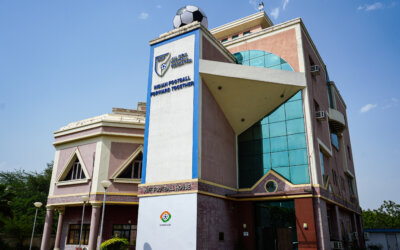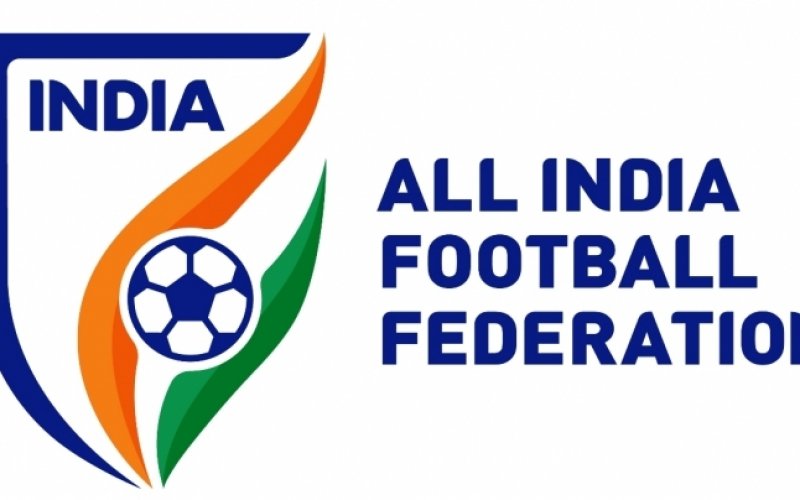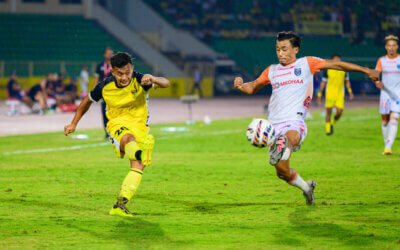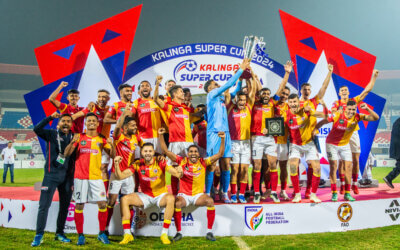AIFF Media Team
NEW DELHI: On July 22, 2018, the Executive Committee of the All India Football Federation (“AIFF”) in its meeting had approved the bone age determination program– Tanner-Whitehouse3 (“TW3”), as was recommended in a special committee meeting on the subject, held on June 7, 2018, wherein AIFF made it clear that it was serious about creating a level playing field for all age group tournaments under its ambit. The committee, with inputs from industry experts, found that the TW3 method is the best available method in the country currently for bone age determination. A testament to this fact is that numerous other sports bodies of the country, including the Board of Control for Cricket in India have implemented the TW3 method of bone age determination, apart from Sports Authority of India and the Ministry of Youth Affairs and Sports who have utilised it for various projects related to Khelo India.
Accordingly, in October 2018, AIFF issued detailed Bone Age Determination Program Guidelines (“BADP Guidelines”), which described in clear terms, the shift in AIFF’s ideology for youth tournaments from the earlier concept of ‘chronological age’ based tournaments, to tournaments based on ‘bone age or skeletal maturity’, and thereafter, upon receiving informed consent in this regard from parents, players and teams, it implemented the various protocols mentioned therein.
After receiving the initial rounds of reports for the ongoing TW3 tests, Dr. Vece Paes, Chairman of the AIFF Sports Medical Committee, informed the chairman and the committee members of the AIFF League Committee that many players’ bone age results had shown readings higher than 13.4 and 15.4, which were the prescribed eligibility benchmarks for a youth player to participate in Hero Sub-Junior League and Hero Junior League, respectively. Dr. Paes opined that this has happened primarily because of the player registrations that the teams had already done, prior to the circulation of the detailed protocol document and as a result of that, teams registered quite a few players who were born in the first half of the calendar year of 2003 (TW3 test cut-off date for Hero Junior League) and 2005 (TW3 test cut-off date for Hero Sub-Junior League). To address this issue, as per the suggestion of Dr. Paes and other committee members, the AIFF League Committee revised the existing bone age eligibility criteria from ‘13.40’ to ‘14.00’ for the Hero Sub-Junior league and from ‘15.40’ to ‘16.00’ for the Hero Junior league. However, the Committee informed the AIFF administration that this adjustment was viewed as a one-time exception only and not to set any precedence of such nature for the future.
The initial TW3 results have thereafter been shared with the respective teams who have in turn, as per the protocol, have shared the reports with the respective players.
With respect to the bone age determination reports, Dr. Paes clarified that “Biologically, it is possible that someone’s skeletal maturity will be faster than others which is why the bone age ratings can be higher than others and in some cases the skeletal maturity is slower and hence the ratings can be lower as well, when compared to the chronological age. However, the bone age ratings are not meant to be construed as a challenge to the veracity of the chronological age, as claimed by the youngsters and their parents/guardians.”
The AIFF President Mr. Praful Patel stated that “The whole point of doing this exercise is to provide a level playing field for all participants, based on bone age / skeletal maturity of the children as per the protocols of the AIFF BADP Guidelines. Accordingly, we at AIFF want to make it clear to all children, parents and the general public that we are not terming/calling anyone cheats or frauds, should the child be ineligible to participate in Hero Sub-Junior League or Hero Junior League, based on the TW3 reports received under the BADP process, because as per the experts’ reports, a child’s skeletal maturity can be faster than others and hence may have a higher bone age rating than the required level. It would be wrong for anyone to label someone for age-fraud without considerable documentary evidences. This test is just to ensure that players of a similar bone/skeletal maturity play together so that their development continues properly without any hindrance. When a boy or girl is deemed ineligible under this test, we are not stating that the boy or girl is not what his or her age documents are claiming to be. We are just saying that his or her skeletal maturity is higher than the specified criteria for a particular tournament.”
Echoing the sentiment, the AIFF General Secretary Mr. Kushal Das elaborated that “Parents and teams, by and large are informed and assured that we are not questioning the credentials submitted by them and it is purely based on the skeletal maturity of the player, basis which, the youth level tournaments will be played from now on. As a result of it there is no action to be taken against the players who have become ineligible to participate in either Hero Junior League or Hero Sub-Junior League, basis the bone age ratings. Instead, those players who have become ineligible for Hero Sub-Junior League 2018-19, can be registered outside the registration window, for Hero Junior League 2018-19, provided they meet the eligibility criteria, as set by the AIFF League Committee”. He further stated that “Youth players who have been deemed ineligible for Hero Junior League 2018-19 should not feel disheartened and prepare themselves for the next higher age category tournament which is the Hero Elite League of the 2019-20 season where there would be many opportunities for them to showcase their talents.”


 Shop
Shop





